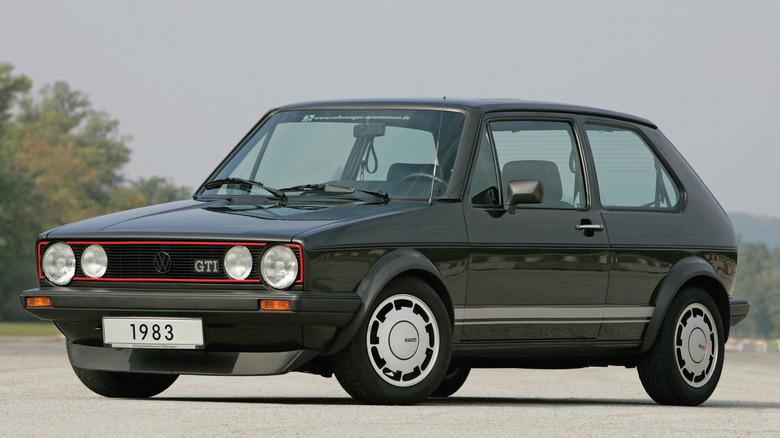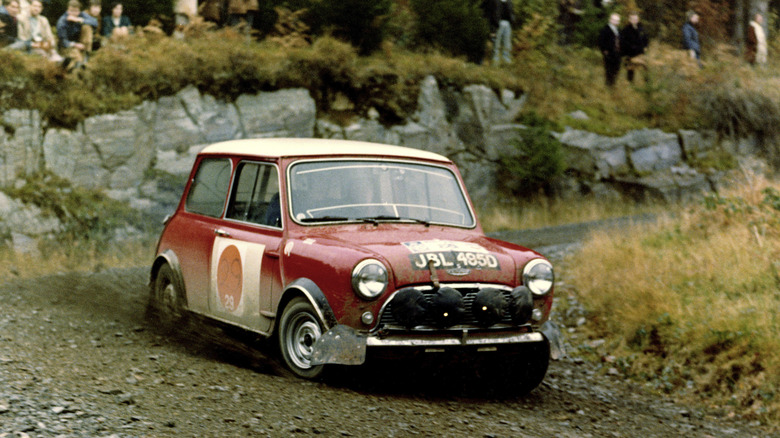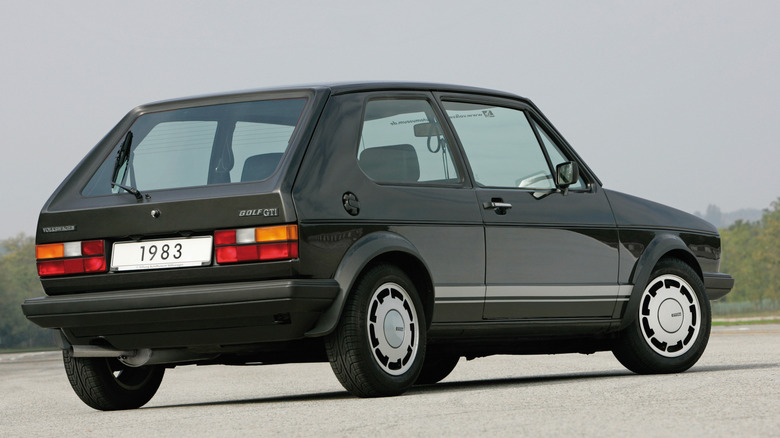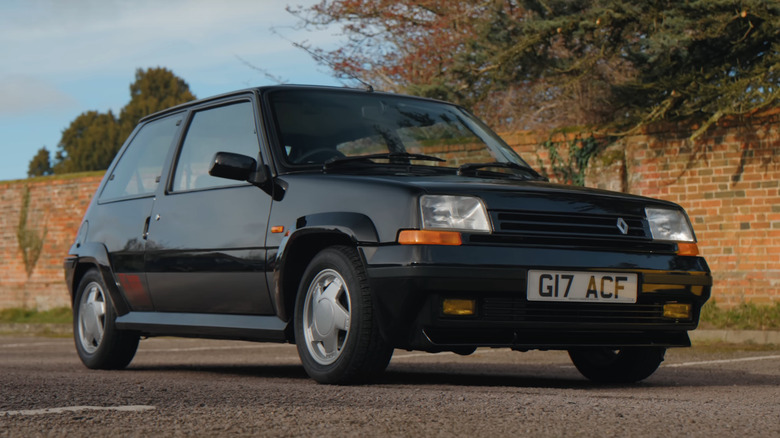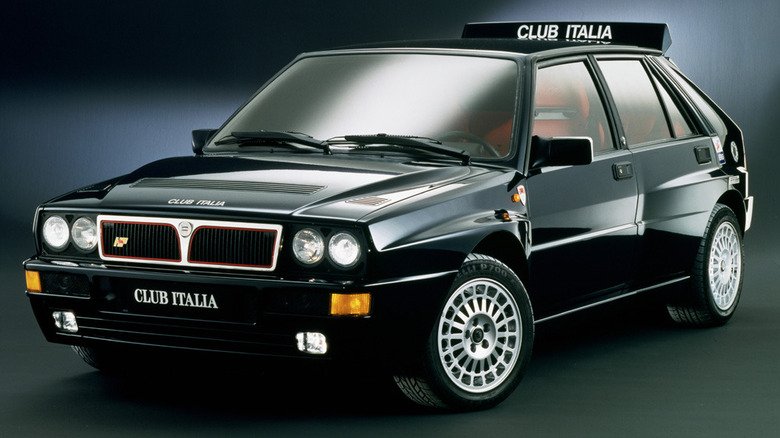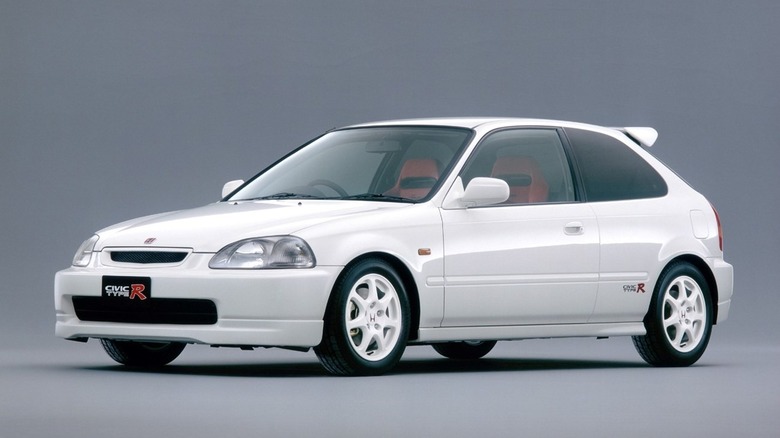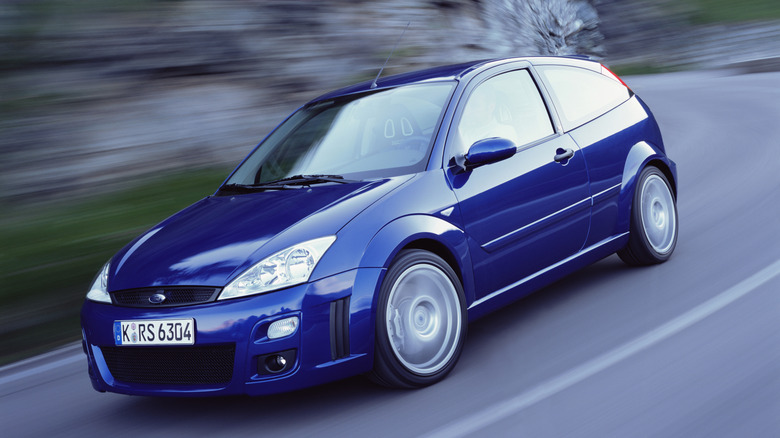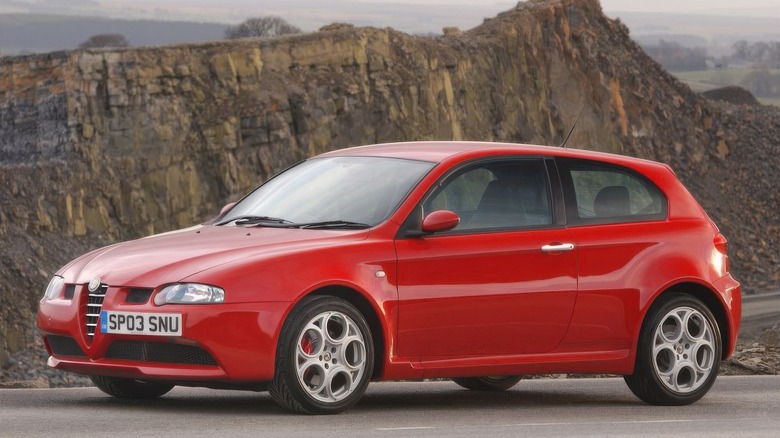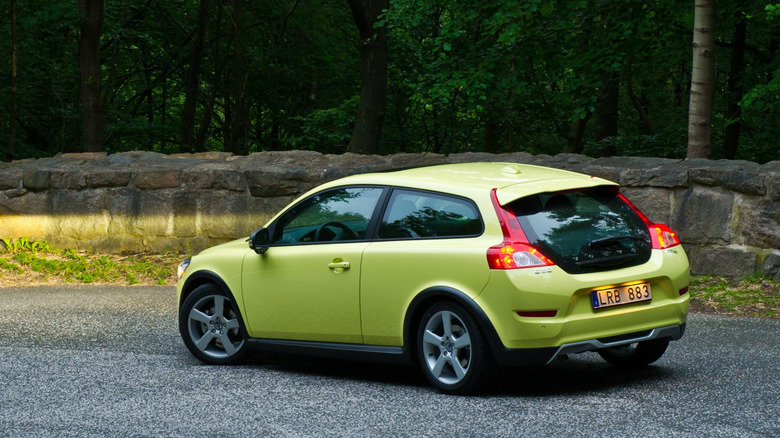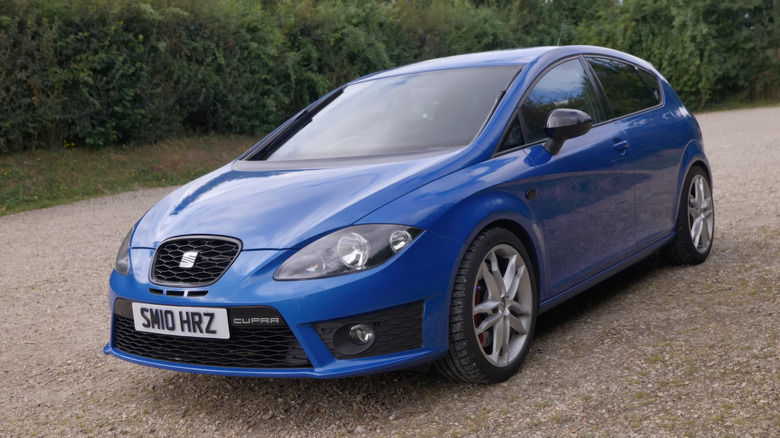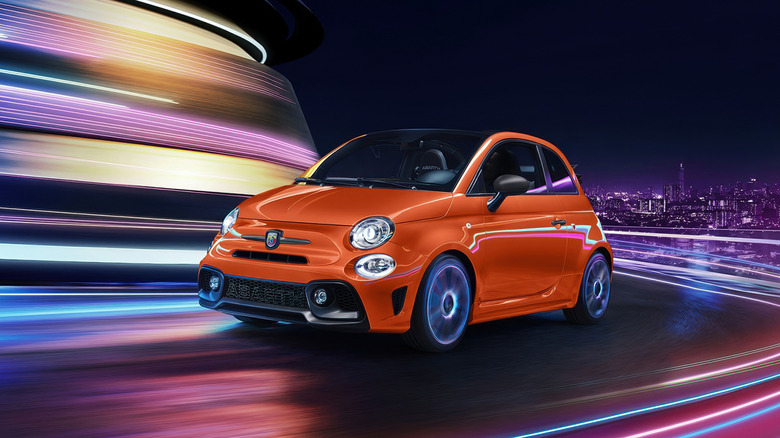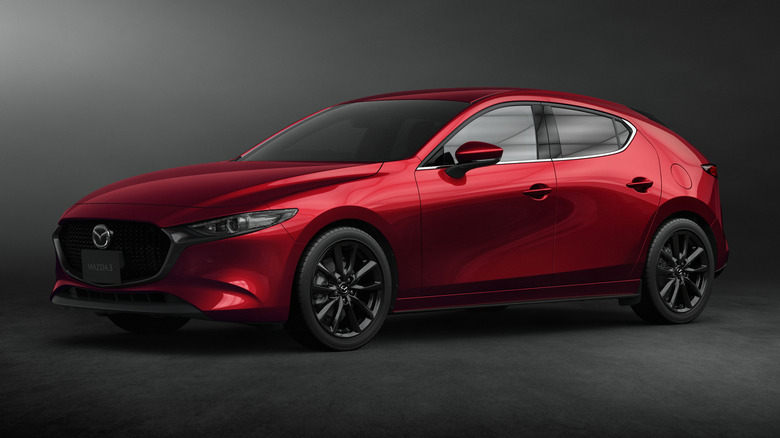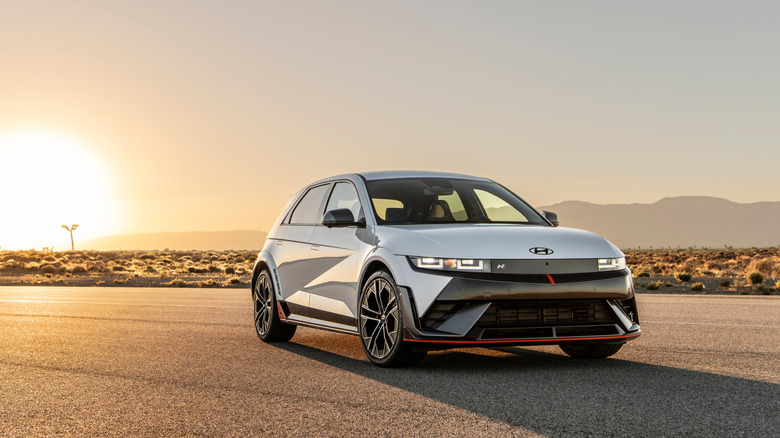12 Of The Best Looking Hatchbacks Ever Designed
The hatchback has a special place in car history. Practical but more compact than a sedan, it quickly became a mainstay on tight European roads. They remain popular today, and currently 10 of the best-selling cars in Europe are hatchbacks, either in regular or crossover form.
Hatchbacks never became as successful in the U.S., but the enthusiast community is still thirsty for hot hatches like the Toyota GR Corolla or Honda Civic Type R. Over the pond, though, hatchbacks, and especially hot hatches, torched city streets for decades, and not just with performance. Quirky yet timeless looks pushed the design envelope, giving us some truly memorable models.
In this piece, we'll have a closer look at some of the best-looking hatchbacks ever designed. Sure, most will be hot hatches, because lower stance always improves hatchback proportions, but some regular hatches also deserved a place on the list. Lock in, because you are about to meet hatchback royalty.
BMC Mini Cooper S Mk1 & Mk2 (1963 to 1971)
The first Mini Cooper wasn't the first hatchback to hit the market, but it's undoubtedly the car that popularized this body style. With its incredibly small footprint and fuel-efficient engines, the Mini was perfect for Great Britain's narrow streets, quickly becoming a favorite among British drivers.
Still, cars don't become legends because they are small and economical. They need a certain je ne sais quoi, which the first Mini has in spades. Like the fact that they are fantastic cars to drive. Despite being a front engine, front-wheel-drive car, the Mini feels feedback rich and dialed in.
These engaging qualities forced BMC to work on a high-performance version. Called the Cooper/Cooper S, it became one of the world's first hot hatches, but also a rally icon. Instead of the diminutive 848cc engine of the original, the Cooper S engines spanned from 970cc to 1275cc in the Mk2, producing up to 75 hp. Thanks to the low curb weight of 1,539 pounds, zero to 60 took a brisk 10.5 seconds.
Then there is the way it looks. Short, square, and low-slung, the Mini had nailed the perfect hatchback proportions. Meanwhile, the tiny wheels, shoved out to the corners and sitting in smoothly designed wheel arches, give it an unmistakable go-kart vibe. The details were spot-on, too — the front grille looks like a moustache, and the black roof adds a dash of sportiness. The design was so influential that BMW has built a whole brand around it.
Volkswagen Golf/Rabbit GTI Mk1 (1976 to 1983)
The Golf has a similar story to the Mini but represents the German auto industry. Developed to replace the Beetle as VW's bread-and-butter model, the Golf quickly became a bestseller. Even 50 years after the VW Golf's introduction, it remains one of the most popular cars worldwide. Still, it's the sporty GTI model that truly captured the imagination of car enthusiasts worldwide. As practical as the regular Golf but with racing pretensions, the Golf GTI was a true high-performance daily driver.
In Europe, at least, the Golf GTI was quite the pocket rocket. With a 1.6-liter fuel-injected engine producing 110 hp, the 1976 Golf GTI sprinted to 60 in just 9 seconds and had a top speed of 112 mph. The GTI also received a 20mm lower suspension and better brakes. It weighed just 1,852 pounds, too, giving it agile handling. Of course, the GTI Mk1 was equipped with the right gearbox — initially a four-speed, and later a five-speed manual. Unfortunately, the America-bound Rabbit GTI only made 90 hp, but it got all other upgrades.
The other big difference was that the Golf had round headlights, while the Rabbit's were square. Both look great, though Golf's round units work better with the purposeful, minimalist design of the GTI. With perfect geometric proportions, wider wheel arches, low stance, and sharp profile, the GTI Mk1 oozes boy racer vibes. Add the iconic red outline on the grille, and you have one of the most iconic hatchbacks ever made. It's easily one of Giorgetto Giugiaro's best designs.
Renault 5 GT Turbo (1987 to 1991)
France has given us some of the best hot hatches ever made. Unlike their rivals, though, French automakers always produced quirkier designs, and none did it better than the second-gen Renault 5 GT Turbo. No, it's not the original Renault 5 Turbo. Admittedly, the mid-engine homologation special looks stunning, but it's not a practical hatchback — it doesn't even have a trunk.
It doesn't matter, because the 5 GT Turbo combines symmetry and Renault's artful approach perfectly. The rear hatch is cut sharply, giving the 5 GT Turbo a more avant-garde look, with the front end and windshield slanted in the opposite direction for perfect symmetry. Renault's use of geometry is also evident in the wide trapezoidal wheel arches, which follow similar angles. Futuristic, tidy, and cheeky, the design has stood the test of time. However, the Renault 5 GT Turbo isn't a legend today only because of its looks. It passes the hot-hatch test with flying colors, too, courtesy of a 38mm lower suspension and thicker anti-roll bars.
Still, the star of the show was, of course, the 1.4-liter turbocharged engine. Equipped with a Garrett T2 Turbo, the carbureted four-cylinder initially made 115 hp, though Renault bumped the Phase 2 to 120 hp using a water-cooled turbocharger and a remap. Thanks to the low curb weight of only 1,830 pounds, the 5 GT Turbo sprinted to 62 mph in just under 8 seconds and had a top speed of 127 mph.
Lancia Delta Integrale Evo II (1993 to 1995)
Few cars have reached the iconic status of the Lancia Delta Integrale. A rally legend, this hot hatch torched races during the late 1980s and early 1990s while also giving customers a taste of its abilities in the crazy rally homologation specials. The fact that it was based on a tranquil front-wheel-drive compact hatchback with 74 hp only adds to its appeal.
Still, the Integrale wasn't your ordinary Delta. A meaty 2.0-liter turbocharged engine with 163 hp and 4WD made the early Delta HF an enthusiast attraction, with the Integrale model bringing the power figure to 182 hp. However, it was the Evoluzione II model that reached superstar level. Four-wheel drive with a slight rear bias, 215 hp with a five-speed manual, and a zero to 60 time of 6.4 seconds. Even more crucially, a balanced chassis and compliant suspension worked on uneven roads — exactly the stuff you need in a rally homologation.
As a cherry on top, the Delta Integrale has one of the most revered hot-hatch designs in history. Delta's well-proportioned boxy design was already a good platform for a handsome sporty hatchback, but the upgrades gave it the street tuner vibes we all love, particularly in the Evo II version. Dramatically wide wheel arches, an aggressive hood, and multiple air inlets all scream performance. Oh, and let's not overlook the stunning 16-inch turbine wheels that give you a hint of the massive turbocharger under the hood. Undoubtedly, the Integrale Evo II is easily one of the coolest Lancia models in history.
Honda Civic Type R EK9 (1997 to 2000)
The latest Honda Civic Type R has everything that matters in a hot hatch, including an aggressive, sporty design. Still, the Civic Type R evolution started with the best-looking model of the bunch — the EK9. Unlike other hot hatches of the era, Honda's design approach was decidedly calmer. Where the Delta Integrale is brash, the Civic Type R EK9 is sleek. Elegant, even.
Of course, there was a reason for this approach. Honda is famous for its high-revving engines made with extremely tight tolerances, so a clean, sleek look worked much better here. The EK9 looks like a surgical tool, designed with precision and simplicity. Make no mistake, the lowered suspension, neatly integrated rear spoiler, and iconic white wheels give it a katana vibe and reveal the high-performance internals. The Civic Type R EK9 still looks potent and purposeful, but in a more understated manner. With its streamlined proportions, it remains iconic more than two decades after its introduction.
However, the EK9 has the mechanical parts to back up its street racer credentials. Under its low hood it hides a 1.6-liter naturally aspirated engine, capable of 182 hp at 8,200 rpm. Its secret sauce — VTEC. Yup, this means you'll need to be deliberate with the five-speed manual and rev it out constantly. Get it done properly, though, and the EK9 Type R will get you to 60 in 6.3 seconds. Despite being a front-wheel-drive, it's agile and responsive in the corners, too, making it a true driver's car.
Ford Focus RS Mk1 (2002 to 2003)
It wouldn't have been an overstatement to say that the first-gen Ford Focus hatchback was a revolution when it appeared in 1998 at the Geneva Motor Show. With its visually striking, angular, and futuristic styling, the Focus oozed concept car looks, yet it was available at competitive prices at dealerships.
Still, it was the high-performance RS model that puts the Focus Mk1's design in history books. Based on the cooler three-door model, the Focus RS Mk1 looks sportier and way more purposeful. The angular details give it a dynamic look, further amplified by the wider wheel arches, lowered stance, and more aggressive front fascia. Meanwhile, the sloping window line and highly positioned taillights give it a coupe-like look that works so well with the RS moniker.
The Focus RS' engine was also deserving of the RS moniker. A 2.0-liter turbocharged four-cylinder, the tuned Duratec unit produced 212 hp and a meaty 229 lb-ft of torque, enough for a zero to 60 sprint of 5.9 seconds and a top speed of 143 mph. It only drove the front wheels through a five-speed manual, but the Mk1 was still equipped to tackle corners like a go-kart, with a Quaife limited-slip front differential taking care of torque steer. It also featured a 65mm wider track and 25mm lowered suspension with Sachs dampers to keep body roll under control.
Alfa Romeo 147 GTA (2002 to 2005)
What happens when you match perfect hatchback proportions with Italian exotica? The Alfa Romeo 147 GTA, of course. One of the best-looking hatchbacks ever designed, the Alfa's V6 street racer looks like an Italian supercar in hatchback clothing. Designers Wolfgang Egger and Walter de Silva's creation is beautifully contoured, with every surface looking like it was shaped by a master sculptor.
Even so, it retains the sharpness you'd expect from an Alfa Romeo performance vehicle. The front end is keen and pointy, while the rear has coupe-like qualities. The front fascia also features Alfa's iconic shield grille, nested between two angry-looking headlights. The taillights look like pieces of art, too, and the telephone dial wheels deserve an article of their own. The Alfa Romeo 147 GTA oozes personality and flair that few other hatchbacks can ever match.
Yet, there is substance under the stunning sheet metal. See, this is not your usual hot hatch with a four-cylinder engine. Instead, Alfa Romeo used a naturally aspirated 3.2-liter V6 producing 250 hp and 221 lb-ft of torque. Thanks to the relatively low curb weight of 3,000 pounds, the 147 GTA gets to 60 in brisk 6.2 seconds and can reach 153 mph.
Unfortunately, all that V6 power goes to the front wheels only. Once you hear the angry V6 roar, though, you'll instantly forget about that. Besides, with an aftermarket Q2 diff, the 147 GTA is excellent in the corners, and comes standard with a six-speed manual.
Volvo C30 (2006 to 2012)
The Volvos of today are often beautiful and elegant, but rarely daring. Yet in 2006, Volvo launched one of its bravest cars in the recent era — the C30 hatchback. Celebrating the revolutionary design of the P1800 ES, one of the best-looking station wagons ever made, the C30 is a true hatchback head turner, particularly from the rear.
Up front, the C30 showcases the usual Scandinavian design approach. The simple, minimalist headlights and upright grille that connects to the sculptured hood certainly look cool, but not hugely impressive. Volvo rectified this with the 2009 facelift, which brought larger, flowing headlights. It was better, but again not on Alfa Romeo 147 level.
Once you view it from the side, though, it becomes evident why the C30 deserved a place on this list. The rear shoulders, for instance, emphasize the compact, athletic proportions and short wheelbase. Yet, they also look streamlined and well-integrated, just like you'd expect from a Scandinavian design. It's the rear where the C30 shines, though. The unique glass hatch, reminiscent of the P1800 ES, gives Volvo's small hatchback a distinctive, eye-catching vibe. The dramatic, tapering roofline further emphasizes the sporty appearance.
Fortunately, the stunning C30 also received a high-performance version. Called the C30 T5, it was equipped with a 2.5-liter five-cylinder turbocharged engine, producing solid 227 hp and 236 lb-ft of torque. It was available with six-speed manual and automatic transmissions, though only in FWD configuration.
Seat Leon Cupra/Cupra R Mk2 (2006 to 2012)
Remember the Walter de Silva guy that co-designed the Alfa Romeo 147? Well, he later joined Seat as a head of design, transforming it into a style-forward brand. Seat has produced many cool-looking hatchbacks, but the Leon Cupra Mk2 hot hatch stands above the rest with its timeless look.
De Silva's influence can be seen from every angle. The V-shaped hood hugs the small but prominent Seat grille, connecting with the flowing roofline. The cat-eye headlights give it a classically beautiful face, but with a dose of predator aggressiveness. The lower line of the headlights continues as an incision in the side profile, which continues elegantly to the rear wheels. Then there's the wedge-shaped roof, which gives the Leon Cupra a forward-leaning stance, and Alfa-esque rear taillights with a squinted cat-eye look. There's a lot going on, but it works. Sharp, angular, and elegant, the Leon Cupra Mk2 still captivates viewers.
Underneath, Seat's hot hatch was essentially a Golf GTI Mk5 but with more power. Equipped with a 2.0-liter turbocharged four-cylinder, it produced 241 hp, enough for a zero to 62 mph sprint of 6.4 seconds. Later, Seat upped the ante with a 265 hp tune of the engine, which brought the acceleration figure down to 6.2 seconds. A six-speed manual was standard on both versions, though the Cupra R was equipped with an electronic differential lock (XDS) to limit torque steer.
Fiat 500 Abarth (2008 to Present)
Pocket rocket is a term often used in Europe to describe small city cars with potent engines and agile handling, and no car fits that term better than the Fiat 500 Abarth. In the latest two iterations, Fiat's tiny hot hatch packs 165 hp in the 595 or 180 hp in the 695. That doesn't sound like much, but keep in mind that the 500 Abarth weighs almost nothing; the 695 tips the scales at just 2,348 pounds, resulting in a zero to 62 mph sprint of 6.7 seconds for the five-speed manual transmission.
Of course, the Abarth has never been about straight-line performance. It's an agile hot hatch, one that you can toss around in tight corners and keep it at the limit most of the time. Yes, it's not practical, with a tight interior and comically small trunk. Still, the Fiat 500 Abarth is a feisty boredom-buster that will surely put a smile on your face. It sounds raucous and angry, too.
Then there is the way it looks. Fiat nailed the retro design when it launched the 500 in 2008, decades after the original 500 — the Topolino. To say that Fiat captured the original's iconic silhouette perfectly would be an understatement, even though the new model has a front-engine configuration, instead of a rear-engine one. The rounded, bubble-like profile gives it a whimsical vibe, while the perfect proportions give it a timeless look. Meanwhile, the Abarth versions, equipped with aggressive body kits, give a meaner leitmotif, but further exemplify the silly vibe. Isn't that what pocket rockets are all about?
Mazda 3 Hatchback (2019 to Present)
The Mazda 3 reminds us of what matters in a hatchback. Practical and well thought out inside yet still incredibly rewarding to drive, Mazda's latest compact hatchback teaches its counterparts a hatchback lesson. The entry-level 2.5-liter, 191 hp engine even comes with a manual to keep your amateur racer dreams alive, though the excellent 250 hp turbo is sadly automatic-only.
The Mazda 3 showstopper on the outside, too. Following the Kodo Soul of Motion design philosophy, the latest Mazda 3 is easily the most attractive hatchback on sale today. With a long hood, and low, wide stance, it looks almost like a rear-wheel-drive sports car. The mean front end, featuring sleek headlights and prominent grille, and coupe-like rear end add to the dynamic looks. Still, it's the distinctive C-pillar that makes everything tick — it gives the car a muscular look to the side profile and forward-leaning stance.
Mazda achieved all this without adding unnecessary bloat, like wings or vents, giving the 3 a gorgeous sculpture-like silhouette.
Hyundai Ioniq 5 N (2024 to Present)
The Hyundai Ioniq 5 EV is easily one of the best-looking hatchbacks available today. Looking at it, you can't help but think that it looks like a Lancia Delta Integrale, but way more techno optimistic. The Ioniq has those classic hatchback proportions, but with sharp lines and body creases that give it a meaner attitude. It's almost like an origami version of the Delta Integrale. Hyundai did a tremendous job with the details, too – just look at those awesome pixel taillights. The high-performance Ioniq 5 N only improves on the design with a well-integrated body kit, giving it an even more aggressive look.
However, the Hyundai Ioniq 5 N is also a track star, with supercar-matching performance courtesy of a 641 hp dual-motor setup. It gets to 60 in just 3.25 seconds. It's also exciting to toss around corners and communicates with the driver. Let's not forget about the faux dual-clutch gearbox and fake hot-hatch sounds, which give it a boy-racer aura. Yes, the Ioniq 5 N has a short 221 mile range, but it's the most fun you can have in an EV — period.
